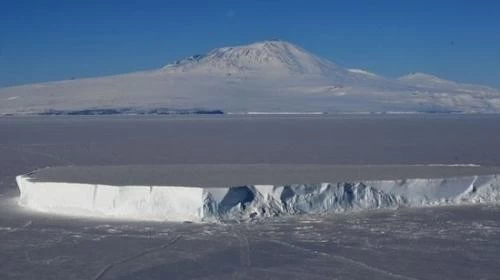New Scientist! Antarctic ice point such as the warm summer of unknown species once lived
chinatopwin
chinatopwin
2017-09-12 09:20:18
In September 10, according to foreign media reports, under the Antarctic snow capped and found
new life reproduction evidence, some of which are of unknown species. And bacteria, such as
algae, the newly discovered DNA seems to belong to higher life forms.
30 million years ago, the Antarctic continent had a mild climate and lush vegetation. The glacial
30 million years ago, the Antarctic continent had a mild climate and lush vegetation. The glacial
age changed everything. But scientists believe that life is still evolving under freezing. Here's a
data map. (Agence France-Presse
Strange DNA sequences
Reported that the Antarctic Ross island volcano Mount Erebus covered with thick ice, by the hot
Strange DNA sequences
Reported that the Antarctic Ross island volcano Mount Erebus covered with thick ice, by the hot
fumigation of many ice caves, found on the inside of the moss soil scientists, DNA traces of algae
and small animal.

Professor Craig of the The University of Waikato in New Zealand, Carey said, a variety of

Professor Craig of the The University of Waikato in New Zealand, Carey said, a variety of
bacteria and algae found in Antarctica volcano cave before, but the latest research results seem
to suggest that more advanced forms of life. He is one of the study's co authors.
Another author, Dr. Sailidewen Fraser of Australian National University in Canberra said that
Another author, Dr. Sailidewen Fraser of Australian National University in Canberra said that
some of the temperature can reach 25 degrees Celsius, can wear a T-shirt, a bright light near
the entrance to the cave, but also through the thin ice shines into deeper ice cave.
The discovery of plants and animals in such an environment is not surprising, but the sequence
The discovery of plants and animals in such an environment is not surprising, but the sequence
of DNA in some species seems strange, and researchers have not seen it before
However, the University of Maine Laurie Cornell is one member of the group. She thinks it is not
However, the University of Maine Laurie Cornell is one member of the group. She thinks it is not
enough to prove that those caves are still in the survival and reproduction of animals and plants,
the next step is to do in those caves looking for living plants or animals. If you can find it, open the
door to a new the world of the door.
Antarctica is the seven continents of the earth in the last one was discovered, not only indigenous
Antarctica is the seven continents of the earth in the last one was discovered, not only indigenous
people living in the mainland. The local wind whistling, the snow covered throughout the year, is
the world's most frequent cold, storm, wind, drought and desert regions, animals and plants are
extremely difficult to survive. Now only flowering plants grow around Antarctic Peninsula North
Sea and Antarctic islands, most plants are lichens, fungi and algae symbiotic complex is formed.
There are several volcanoes on the continent of Antarctica, and sub glacial caves may be
There are several volcanoes on the continent of Antarctica, and sub glacial caves may be
widespread. In recent years, studies have shown that life remains under the thick ice caps in
Antarctica
Under the ice hidden but beautiful spot
In 2013, researchers removed ice samples from Lake Weallans, which is covered by Antarctic
Under the ice hidden but beautiful spot
In 2013, researchers removed ice samples from Lake Weallans, which is covered by Antarctic
ice sheets, and found that the water contained a large number of living cells, proving that there
was still life under the 2000 meter ice
Similar as the frozen lake wealands lake, Antarctica is more than 400. This means that hundreds
Similar as the frozen lake wealands lake, Antarctica is more than 400. This means that hundreds
of kilometers of ice under another ecosystem not known to mankind, millions of years and the
surface contact, the metabolism of many microbial systems, reproduction and evolution form may
be beyond human imagination.
In addition, the analysis of the data of scholars show that the Antarctic sea life world may
In addition, the analysis of the data of scholars show that the Antarctic sea life world may
represent an independent, special biota, over millions of years of circulation in the Antarctic
glacier, there may be a new species of "incubator".
According to the fossils found that 30 million years ago, the Antarctic continent, mild climate,
According to the fossils found that 30 million years ago, the Antarctic continent, mild climate,
Kusaki Toyoshige; about about 28000000 years ago, the ice gradually formed, various life have
disappeared, and the ocean retains the rich biodiversity.
The marine census data show that the Antarctic waters have cataloged animal 75000 species,
The marine census data show that the Antarctic waters have cataloged animal 75000 species,
of which 235 species are polar seas in common, best known for including penguins, seals and
whale, their food sources include feed on algae planktonic animal.











